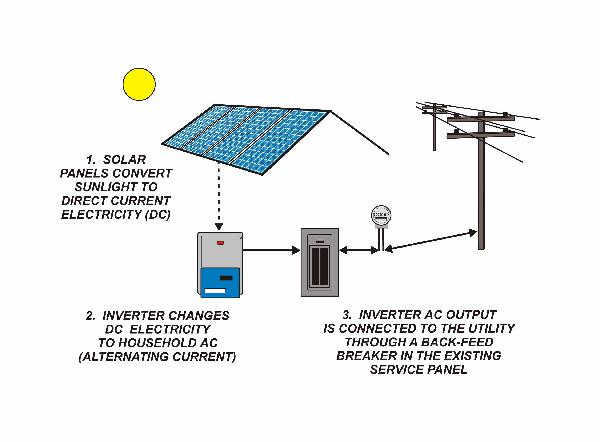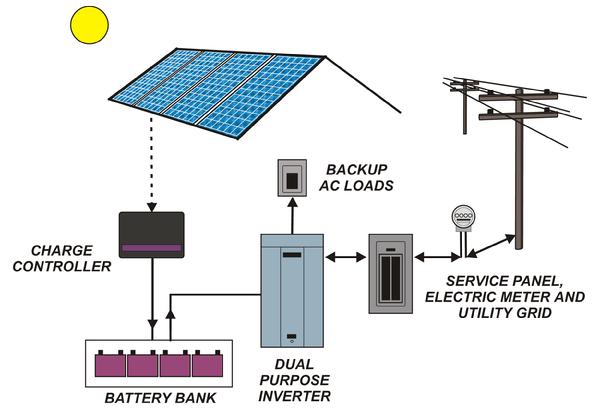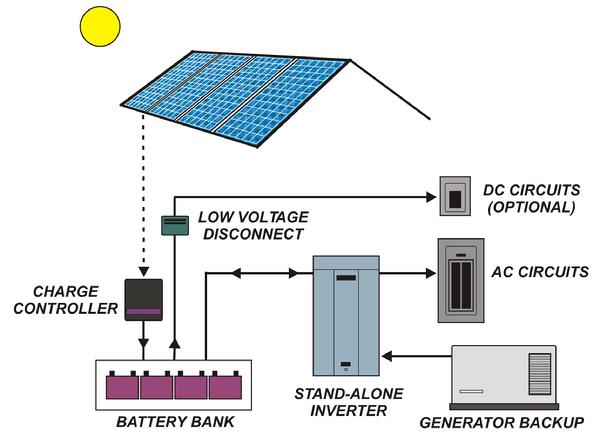3 types of systems
1. PV System:
GRID-TIE (BATTERY FREE)

The simplest and most cost effective PV design for most sites is the "Grid-Tie" (sometimes referred to as intertied or utility-interactive) system. This system does not provide backup power during a power outage (even if the sun is shining) but for sites with reliable grid power, this is usually the logical system choice.
2. PV System:
GRID-TIE WITH BATTERY BACKUP

The Grid-Tie With Battery Backup system can also push excess electricity produced to the electric utility grid but has the added feature of batteries in order to power some selected backup loads when the grid is down. With this benefit comes increased complexity, cost and maintenance requirements.
3. PV System:
STAND-ALONE

The Off-Grid or Stand-Alone PV System incorporates large amounts of battery storage to provide power for a certain number of days (and nights) in a row when sun is not available. The array of solar panels must be large enough to power all energy needs at the site and recharge the batteries at the same time. Most Off-Grid systems benefit from the installation of more than one renewable energy generator and may include Wind and/or Hydro power. A gas generator is often employed for emergency backup power. You may have seen mini versions of the stand-alone system on remote road signs and radio towers.
